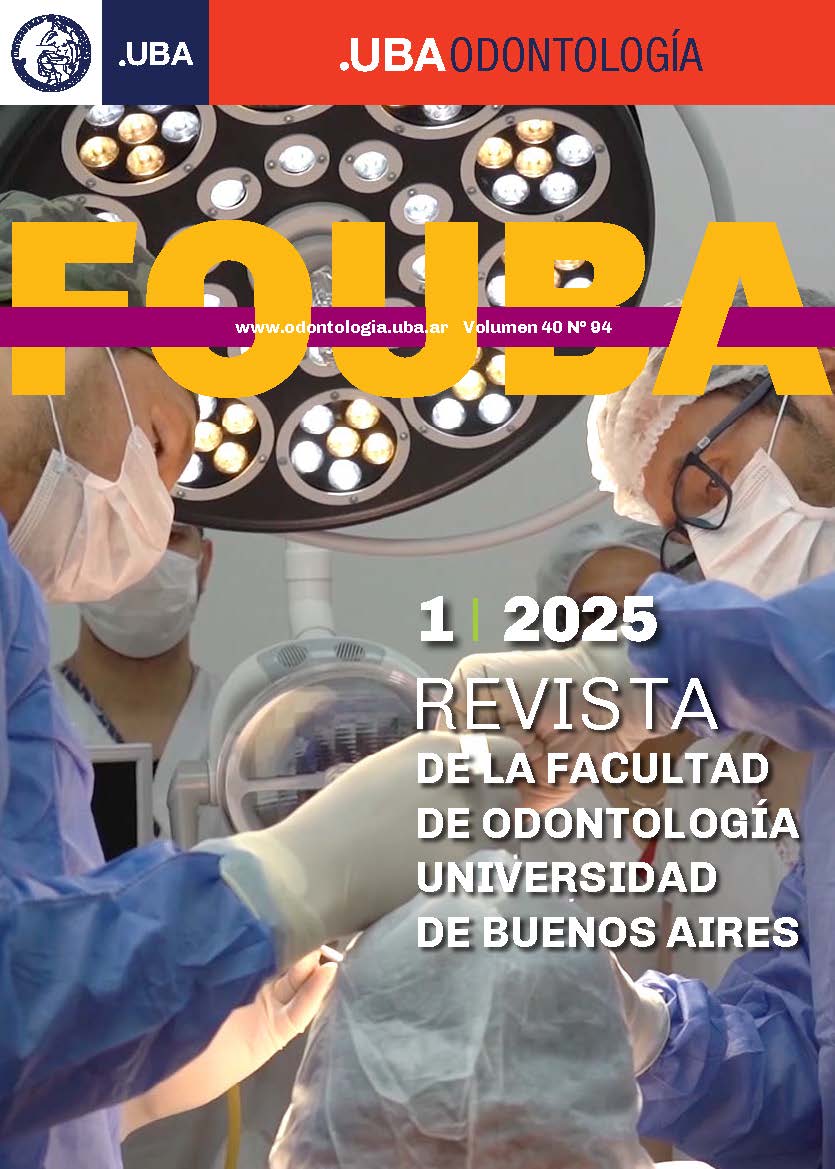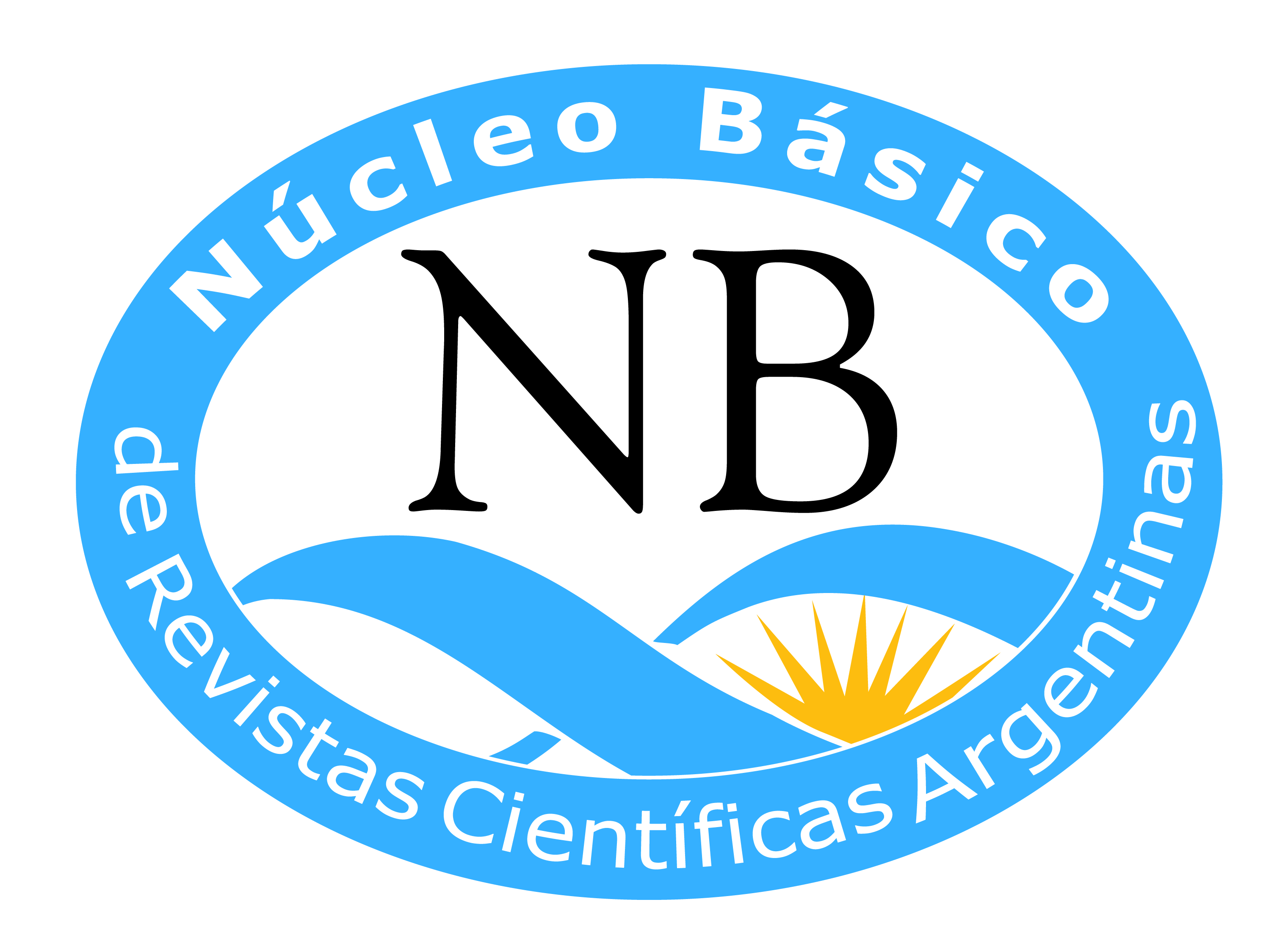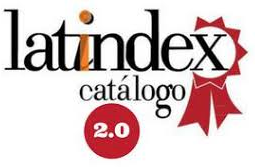Comparación de la Penetración de Distintas Agujas de Irrigación en Endodoncia
DOI:
https://doi.org/10.62172/revfouba.n94.a240Palabras clave:
Endodoncia, Irrigación, Agujas de irrigación, Instrumentación mecanizada, Tratamiento endodónticoResumen
Objetivo: Comparar la profundidad de penetración de las diferentes agujas de irrigación en endodoncia en conductos simulados previamente instrumentados con el sistema Protaper Gold (PTG) y WaveOne Gold (WOG). Materiales y métodos: En tacos de entrenamiento (Endo Training Bloc J-Shape Ø15.02 Taper, Dentsply Sirona) instrumentados con sistemas WOG y PTG (Dentsply Maillefer, Suiza) se midió la profundidad de penetración de 4 agujas de irrigación distintas. Los datos se analizaron mediante la prueba ANOVA de una vía, seguida por comparaciones post hoc empleando la prueba de Tukey-Kramer (p < 0,05, significativo). Resultados: Dentro del sistema PTG, la profundidad de penetración (mm) alcanzada por las agujas TruNatomy 30G (TNY), Neojet 25G (NEO), Max-I-Probe 30G (MIP) y 2 side vents 30G (2SV) tuvo una media (DE) de 14 (2), 11 (2), 11 (1) y 12 (1), respectivamente; con diferencias significativas entre TNY y NEO (p < 0,05), y entre TNY y MIP (p < 0,05). Con el sistema WOG se obtuvieron resultados similares: la profundidad media (DE) con agujas TNY, NEO, MIP y 2SV fue de 14 (1), 11 (1), 12 (1) y 13 (1), respectivamente; con diferencias significativas entre TNY y NEO (p < 0,05), y entre TNY y MIP (p < 0,05). Conclusiones: Los resultados sugieren que para ambos sistemas la aguja TNY alcanza mayor penetración que las agujas NEO y MIP. Posteriores trabajos podrían enfocarse a comparar, específicamente, la profundidad de penetración de los distintos instrumentos de cada sistema en función del material de confección de las agujas.
Citas
Albrecht, L. J., Baumgartner, J. C., y Marshall, J. G. (2004). Evaluation of apical debris removal using various sizes and tapers of ProFile GT files. Journal of Endodontics, 30(6), 425–428. https://doi.org/10.1097/00004770-200406000-00012
Alves, F. R., Andrade-Junior, C. V., Marceliano-Alves, M. F., Pérez, A. R., Rôças, I. N., Versiani, M. A., Sousa-Neto, M. D., Provenzano, J. C., y Siqueira, J. F., Jr (2016). Adjunctive steps for disinfection of the mandibular molar root canal system: a correlative bacteriologic, micro-computed tomography, and cryopulverization approach. Journal of Endodontics, 42(11), 1667–1672. https://doi.org/10.1016/j.joen.2016.08.003
Antunes, H. S., Rôças, I. N., Alves, F. R., y Siqueira, J. F., Jr (2015). Total and specific bacterial levels in the apical root canal system of teeth with post-treatment apical periodontitis. Journal of Endodontics, 41(7), 1037–1042. https://doi.org/10.1016/j.joen.2015.03.008
Boutsioukis, C., y Gutierrez Nova, P. (2021). Syringe irrigation in minimally shaped root canals using 3 endodontic needles: a computational fluid dynamics study. Journal of Endodontics, 47(9), 1487–1495. https://doi.org/10.1016/j.joen.2021.06.001
Chavez de Paz L. E. (2007). Redefining the persistent infection in root canals: possible role of biofilm communities. Journal of Endodontics, 33(6), 652–662. https://doi.org/10.1016/j.joen.2006.11.004
Chen, J. E., Nurbakhsh, B., Layton, G., Bussmann, M., y Kishen, A. (2014). Irrigation dynamics associated with positive pressure, apical negative pressure and passive ultrasonic irrigations: a computational fluid dynamics analysis. Australian Endodontic Journal, 40(2), 54–60. https://doi.org/10.1111/aej.12027
De Morais, A. L., de Alencar, A. H., Estrela, C. R., Decurcio, D. A., y Estrela, C. (2016). Working length determination using cone-beam computed tomography, periapical radiography and electronic apex locator in teeth with apical periodontitis: a clinical study. Iranian Endodontic Journal, 11(3), 164–168. https://doi.org/10.7508/iej.2016.03.003
Estrela, C., Silva, J. A., de Alencar, A. H., Leles, C. R., y Decurcio, D. A. (2008). Efficacy of sodium hypochlorite and chlorhexidine against Enterococcus faecalis--a systematic review. Journal of Applied Oral Science: Revista FOB, 16(6), 364–368. https://doi.org/10.1590/s1678-77572008000600002
Grossman, L. I. (1943) Irrigation of root canals. The Journal of the American Dental Association, 30(23), 1915–1917. https://doi.org/10.14219/jada.archive.1943.0397
Kakehashi, S., Stanley, H. R., y Fitzgerald, R. J. (1965) The effects of surgical exposures of dental pulps in germ-free and conventional laboratory rats. Oral Surgery, Oral Medicine, and Oral Pathology, 20, 340–349. https://doi.org/10.1016/0030-4220(65)90166-0
MedCalc Software Ltd (2023). MedCalc® Statistical Software version 20.006. https://www.medcalc.org
Möller, A. J., Fabricius, L., Dahlén, G., Ohman, A. E., y Heyden, G. (1981). Influence on periapical tissues of indigenous oral bacteria and necrotic pulp tissue in monkeys. Scandinavian Journal of Dental Research, 89(6), 475–484. https://doi.org/10.1111/j.1600-0722.1981.tb01711.x
Peters, O. A. (2004) Current challenges and concepts in the preparation of root canal systems: a review. Journal of Endodontics, 30(8), 559–567. https://doi.org/10.1097/01.don.0000129039.59003.9d
Schilder, H. (1974) Cleaning and shaping the root canal. Dental Clinics of North America, 18(2), 269–296. https://doi.org/10.1016/S0011-8532(22)00677-2
Sedgley, C. M., Nagel, A. C., Hall, D., y Applegate, B. (2005) Influence of irrigant needle depth in removing bioluminescent bacteria inoculated into instrumented root canals using real-time imaging in vitro. International Endodontic Journal, 38(2), 97–104. https://doi.org/10.1111/j.1365-2591.2004.00906.x
Siqueira, J. F., Jr, y Rôças, I. N. (2011). Optimising single-visit disinfection with supplementary approaches: a quest for predictability. Australian Endodontic Journal, 37(3), 92–98. https://doi.org/10.1111/j.1747-4477.2011.00334.x
Zhou, N., Huang, Z., Yu, M., Deng, S., Fu, B., y Jin, H. (2022) Influence of needle working length and root canal curvature on irrigation: a computational fluid dynamics analysis based on a real tooth. BMC Oral Health, 22(1), 179. https://doi.org/10.1186/s12903-022-02205-2
Publicado
Cómo citar
Número
Sección
Licencia
Derechos de autor 2025 Revista de la Facultad de Odontologia. Universidad de Buenos Aires

Esta obra está bajo una licencia internacional Creative Commons Atribución-NoComercial-SinDerivadas 4.0.











